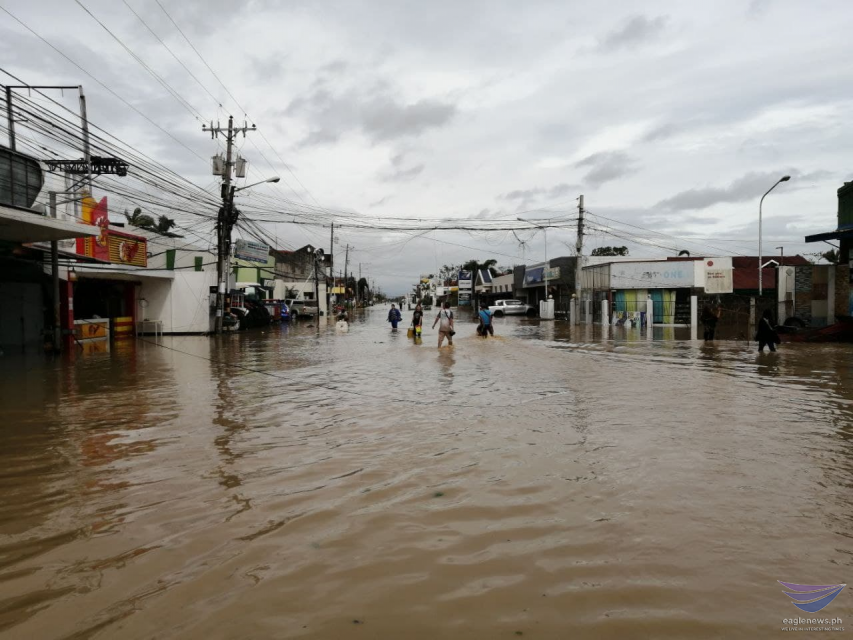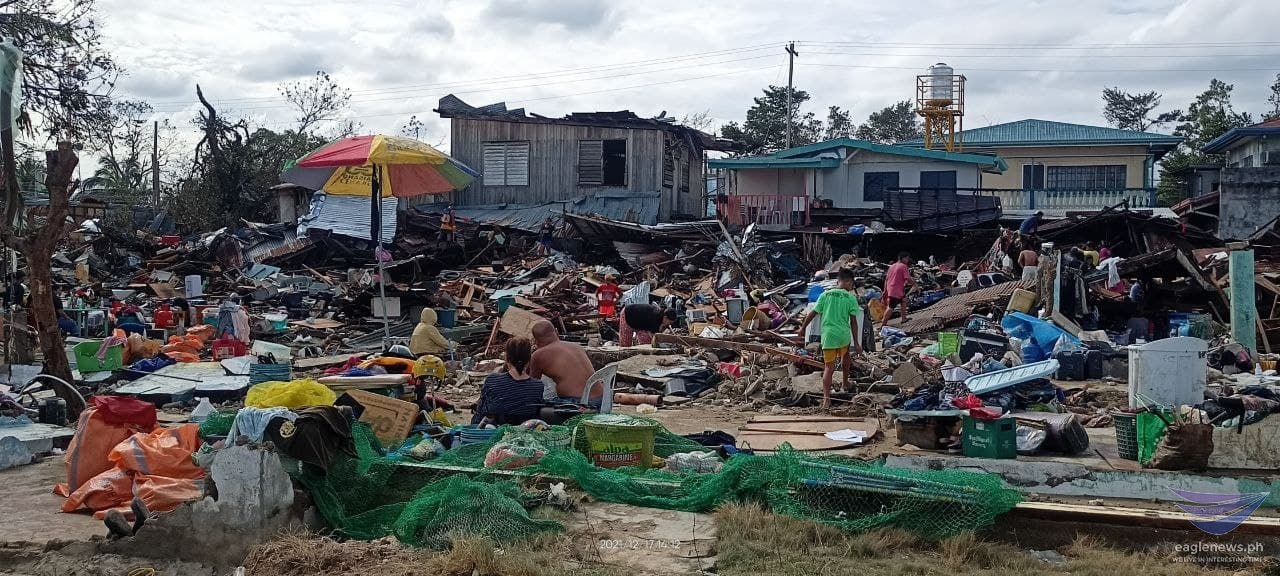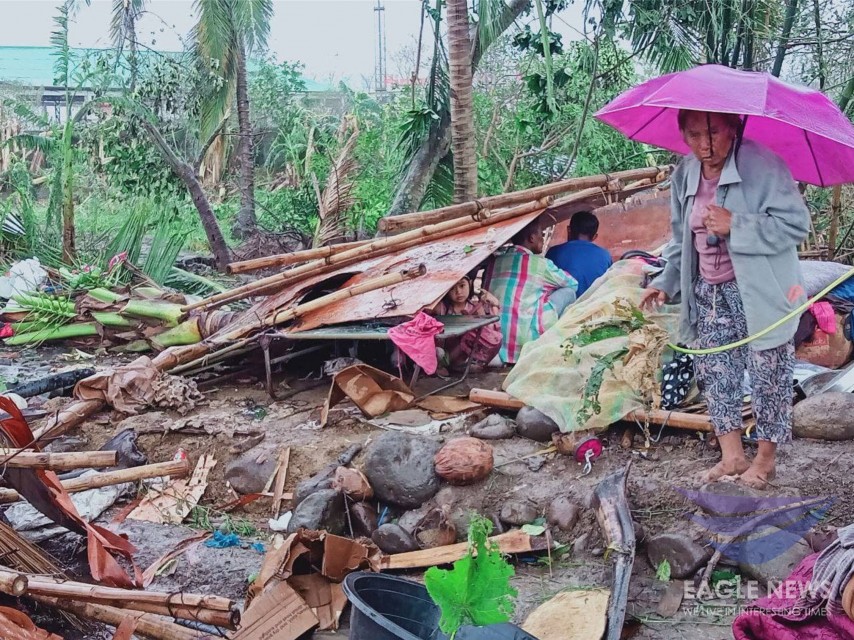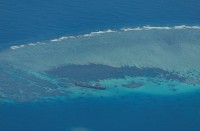
by Allison Jackson and Ron Lopez
Agence France Presse
The death toll from the strongest typhoon to hit the Philippines this year surpassed 200 on Monday, as desperate survivors pleaded for urgent supplies of drinking water and food.
The Philippine Red Cross reported “complete carnage” in coastal areas after Typhoon Rai left homes, hospitals and schools “ripped to shreds”.
The storm tore off roofs, uprooted trees, toppled concrete power poles, smashed wooden houses to pieces, wiped out crops and flooded villages — sparking comparisons to the damage caused by Super Typhoon Haiyan in 2013.
“Our situation is so desperate,” said Ferry Asuncion, a street vendor in the hard-hit seaside city of Surigao, which was devastated by the storm.
Residents urgently needed “drinking water and food”, he said.
At least 208 people were killed and 52 were missing in the latest disaster to hit the archipelago, with hundreds more injured after the storm ravaged southern and central regions, the national police said.
More than 380,000 people fled their homes and beachfront resorts as Rai slammed into the country on Thursday as a super typhoon.
One of the hardest-hit islands was Bohol — known for its beaches, rolling “Chocolate Hills”, and tiny tarsier primates — where at least 94 people have died, provincial Governor Arthur Yap said on his official Facebook page.
Many wooden houses in the coastal town of Ubay were flattened and small fishing boats destroyed on the island, where a state of calamity has been declared.
A senior official at the national disaster agency said he had not expected so many fatalities.
“I was proven wrong as it appears now coming from the reports,” said Casiano Monilla, deputy administrator for operations.
– Victims plea S.O.S –
Rai hit the Philippines late in the typhoon season — most cyclones develop between July and October.
Thousands of military, police, coast guard and fire personnel are being deployed to assist in search and rescue efforts in the worst-affected areas.

Coast guard and naval vessels carrying food, water and medical supplies are being dispatched, while heavy machinery — like backhoes and front-end loaders — are being sent to help clear roads blocked by fallen power poles and trees.
“It’s going to be a long, tough road for people to rebuild and get their lives back on track,” said Alberto Bocanegra, head of the International Federation of Red Cross and Red Crescent Societies in the Philippines.
The organisation appealed for 20 million Swiss francs ($21.6 million) to fund urgent relief and recovery efforts.
An aerial survey of damage to parts of Bohol — known for its beaches, rolling “Chocolate Hills”, and tiny tarsier primates — showed “our people have suffered greatly”, Yap said.
– ‘Reminiscent’ of Haiyan –
There has also been widespread destruction on Siargao, Dinagat and Mindanao islands, which bore the brunt of Rai when it slammed into the Philippines.
Aerial photos shared by the military showed severe damage in the Siargao town of General Luna, where many surfers and holidaymakers had flocked ahead of the December holidays, with buildings stripped of roofs and debris littering the ground.
Tourists were being evacuated from the island on Sunday by plane and boat.
Dinagat Governor Arlene Bag-ao has said the damage to the island’s landscape was “reminiscent if not worse” than that caused by Super Typhoon Haiyan in 2013.
Haiyan, called Yolanda in the Philippines, was the deadliest cyclone on record in the country, leaving more than 7,300 people dead or missing.

“I saw how Typhoon Odette tore the provincial capitol apart, piece by piece,” Dinagat PIO Crisostomo told radio station DZBB, using the local name for Rai.
“Big tables as heavy as a man went flying during the onslaught of the storm,” he said.
In Surigao City, on the northern tip of Mindanao, shattered glass from smashed windows, roofing, power lines and other debris were scattered in the streets.
Tricycle driver Rey Jamile, 57, braved flooded streets and “flying” sheets of corrugated iron roofing to get his family to safety at a school evacuation centre.
“The wind was very strong,” he told AFP, adding now the storm was over he was struggling to find water and food.
Rai’s wind speeds eased to 150 kph as it barrelled across the country, dumping torrential rain, uprooting trees and destroying wooden structures.
It emerged over the South China Sea on Saturday and headed towards Vietnam.
Rai hit the Philippines late in the typhoon season — most cyclones typically develop between July and October.
Scientists have long warned that typhoons are becoming more powerful and strengthening more rapidly as the world becomes warmer because of human-driven climate change.
The Philippines — ranked among the most vulnerable nations to the impacts of climate change — is hit by an average of 20 storms every year, which typically wipe out harvests, homes and infrastructure in already impoverished areas.
Typhoon Haiyan, called Yolanda in the Philippines, was at the time the strongest storm ever to have made landfall and left over 7,300 people dead or missing. The death toll from Rai is not expected to get anywhere close to that number.
The Philippines has an established disaster management system that provides early warnings to residents of an approaching storm and moves vulnerable communities into evacuation centres before it hits.
But the storm has dealt a savage blow to the country’s tourism sector, which was already struggling to recover after Covid-19 restrictions decimated visitor numbers.
SOS was painted on a road in the popular tourist town of General Luna on Siargao island, where surfers and holidaymakers had flocked ahead of the holidays, as people struggled to find water and food.
“There’s no water anymore, there’s a water shortage, on day one there was already looting in our neighbourhood,” Siargao resort owner Marja O’Donnell told CNN Philippines.
There has also been widespread destruction on Dinagat and Mindanao islands, which along with Siargao bore the brunt of the storm when it slammed into the country packing wind speeds of 195 kilometres (120 miles) per hour.
At least 14 people died on the Dinagat Islands, provincial information officer Jeffrey Crisostomo told broadcaster ABS-CBN.
“Dinagat Islands has been levelled to the ground,” he said.
Swathes of the affected areas have no communications, hampering efforts by disaster agencies to assess the full extent of the storm’s damage.
Electricity has also been knocked out, affecting water-refilling stations and ATMs.
Thousands of military, police, coast guard and fire personnel have been deployed to hard-hit areas along with food, water and medical supplies, while heavy machinery — like backhoes and front-end loaders — have been sent to clear roads blocked by fallen power poles and trees.
But some victims have expressed frustration at the government’s response.
“No one showed up — I don’t know where the politicians and (election) candidates are,” said a visibly angry Levi Lisondra, an elderly resident in Surigao City, on the northern tip of Mindanao.
© Agence France-Presse







